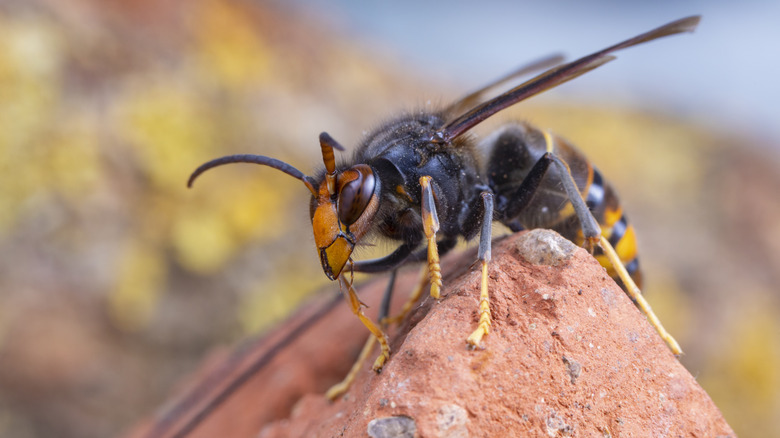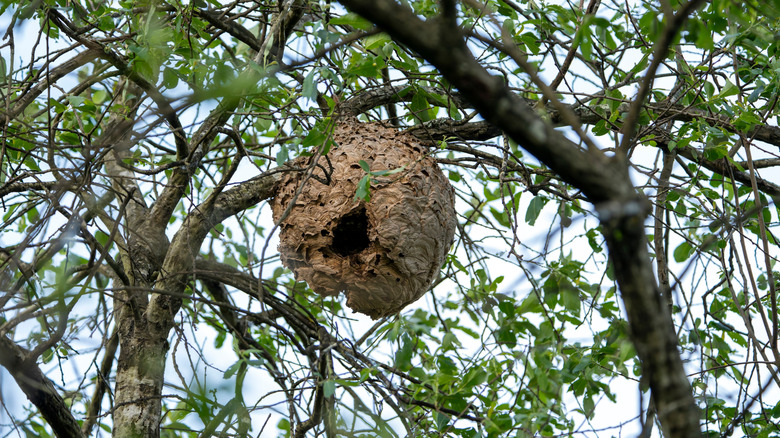Scientists Are Using This High-Tech Weapon To Control The Spread Of An Invasive Species
You may not consider a miniature tracking device for an invasive insects a high-tech weapon, but that's how some British scientists are hunting and destroying Asian hornet nests. It has to do with how Asian hornets, formerly known as murder hornets, interact with other local insects, like honeybees. It's no secret that honeybees are struggling to survive and need all the help they can get. So, Asian hornets eating honeybees and pollinators in huge swarms, as much as 24 pounds of insects per season, is not ideal. It puts added pressure on the hive, and considering they have such a monumental impact on our ecosystem, there is incentive for scientists to find a solution.
The tracking technology is used to find hornet nests faster than is traditionally possible, hours versus days, and then wipe them out to prevent pollination interference. To make it work, scientists capture a single hornet using bait stations and then attach tiny transmitters to their bodies. When the hornets fly back to their colonies, scientists track and destroy them. Asian hornets usually make their nests up high, out of reach and sometimes out of sight in tree canopies. That can make them difficult to spot and give the hornets more time to propagate. Time matters, as during peak season, a colony can double in size within seven days. Miniature tech used to benefit the insect world has become increasingly common, like the swarms of insect drones created at MIT to assist with artificial pollination.
The high-tech fight against Asian hornets
Asian hornets eat pollinators and honeybees because they need large amounts of protein to feed and grow their young. A beehive, filled with fresh, healthy prey, is the ultimate target for these hornets. And since animal-based pollination is responsible for nearly one-third of food production worldwide, the high-tech trackers have become more important. Major factors in bumblebee decline are exactly what you'd think, including climate-related destruction of their habitats. In this case, however, those habitats are being overrun by Asian hornets.
But the work to reverse this trend involves more than scientists hunting hornets with mini trackers. Locals can also get involved when they spot hornets in their area, using the Asian Hornet Watch app, which is designed to gather community reports and facilitate a rapid response. As Tracy Wilson, Apha's head of operational delivery, told The Guardian, "The public are seeing more Asian hornets around. So there is an assumption or a feeling that they must be established, but that isn't the case." So, if you spot something, say something. It may seem like the hornets are thriving, but with the public's help, scientists can stay on top of eradication.

